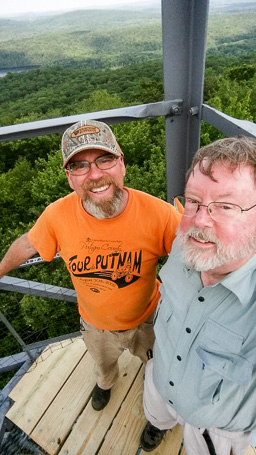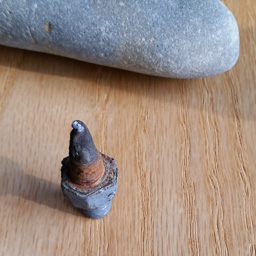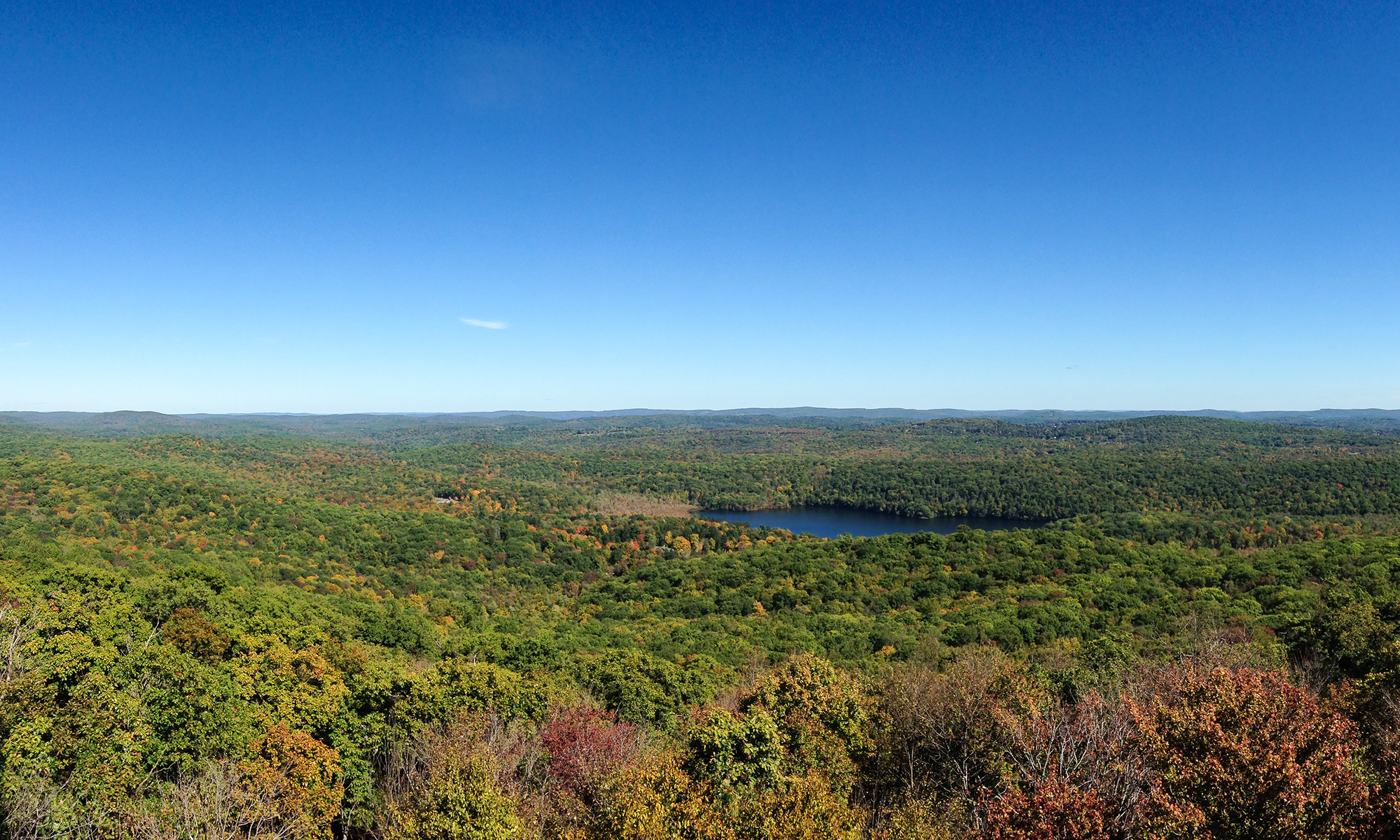Last year the Kent Conservation Advisory Committee, asked the Kent Conservation Foundation to develop a long term plan for the tower’s maintenance. The KCAC is a Town of Kent government committee that has held the stewardship agreement with the State of New York for the fire tower atop Mount Nimham for many years. The KCF is a not-for-profit organization established to carry out projects for the KCAC that can’t be funded by the Town or the State.
As a first step, the Foundation contracted with a professional engineer to have the tower inspected. His report makes it clear that the tower is in good shape — the CAC volunteers have done a great job over the years keeping it up.

But the tower is a structure on the top of a mountain that is and has been exposed to the elements, so it’s no surprise that the report recommends actions to preserve and protect the tower so that the public can continue to enjoy it. The two major ones are to get the tower on a regular painting schedule and to replace the wooden landings “within the next two years.”
Putting together and carrying out the plan for the regular painting schedule is the big item, of course. It’s well underway and we’ll cover those activities in future articles.
Replacing the wooden landings, while no piece of cake, is certainly doable with a small crew of volunteers if we take it slow and easy. And since the work needs to get done soon-ish, the CAC and the KCF decided now was the time.
After preparatory work the day before, a small crew gathered at the tower on July 10 to replace the landing that was in the most need of help — landing 3, the one about 20 feet above the treetops — and to do ongoing anti-graffiti maintenance in the cab at the top of the tower.

Volunteers Emi Pennington and Jolie Siegel started the day by repainting the inside of of the tower cab while Dave Ehnebuske and Bill Volckmann set up a portable woodshop and worked out how to cut necessary planks, including the various notches and cutouts required to accommodate the tower’s steel structure. In the afternoon, Jolie and Emi stood watch to keep hikers away from the tower while Bill and Dave did the work of removing the old planks and replacing them with the new ones.
The people who built the tower did a good job and used good materials: 77 years after their installation, it was still possible to remove most of the bolts by unscrewing the nuts on the underside of the floor. And once the nuts were removed most of the planks came out intact. But a few bolts were in locations where water not only rusted them solid, but had considerably rusted the shank of the bolts, and one of the planks came apart when it was removed.
The engineer was right: it’s time to replace the landings. The continuing plan is to do them one at a time over the course of the coming months. They’re fine now but won’t last indefinitely.
All told, including the preparation, the actual work day and the unloading and clean-up afterwards, the project required 171 person-miles of travel, 49.5 person-hours of volunteer work, and $326.76 in supplies and equipment rental.
It’s great to see what volunteers can do and how far they can stretch the Foundation’s funding. That said, there are also some things volunteers probably shouldn’t do. Like scraping out-of-the-way rusty patches on the tower frame way above the ground and painting the whole tower structure. After much debate and thought it’s become pretty clear that to do the job well and safely, the Foundation will need to hire professionals with their expertise, skills and equipment.
But that’s for another day. For today, the tower has a fresh coat of paint in the cab and a new landing. We hope you’ll go up and have a look!
